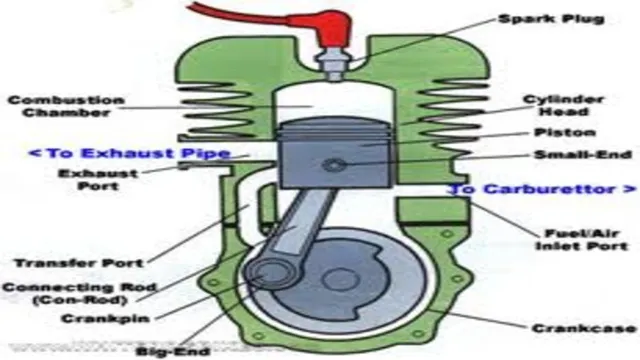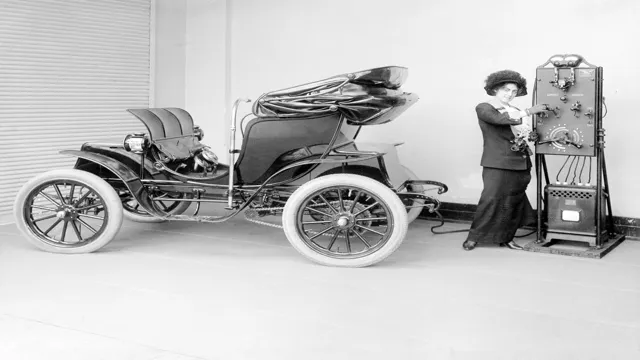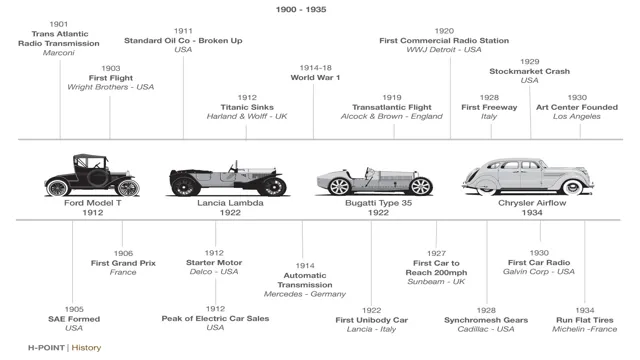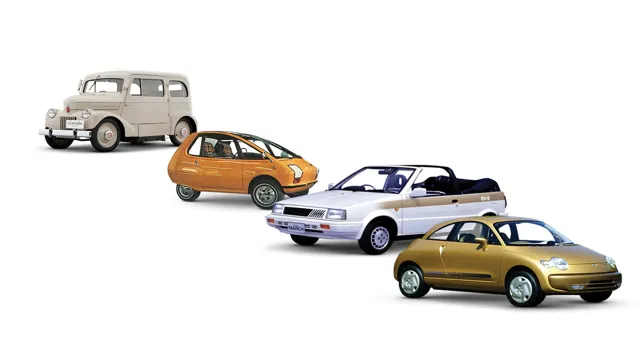Unveiling the Future of Eco-Friendly Driving: A Comprehensive Look at Honda’s Electric Car History
Honda Motor Company is a well-known brand in the automotive industry, one that we’ve all become familiar with. This Japanese car manufacturer has been producing high-quality electric cars for many years, and Honda’s electric vehicles have come a long way. From the introduction of the “EV Plus” to the creation of the “Clarity,” Honda has gradually honed its expertise in electric car design and innovation.
In this blog post, we will dive into the history of Honda’s electric vehicles, detailing everything from their early attempts to tackle the electric car market to their most recent creations. Join us as we venture on a journey through time, uncovering some of the most fascinating events in the history of Honda’s electric cars.
Early Days of Honda’s Electric Cars
In the early days of Honda’s electric car history, the company was ahead of its time with its experimental EV models. The EV Plus was one of Honda’s first pure electric cars, produced between 1997 and 199 This car had a range of up to 100 miles on a single charge, which was impressive for its time.
In 2000, Honda released the Insight, a hybrid electric car that was groundbreaking in terms of fuel efficiency. The Insight could get up to 70 miles per gallon on the highway, a feat that other carmakers were struggling to match. Although Honda’s electric car offerings were limited in the early days, the company’s commitment to innovation and sustainability laid the foundation for continued advancements in hybrid and electric vehicles in the years to come.
The current lineup of Honda electric and hybrid cars demonstrates the company’s dedication to creating environmentally responsible transportation options that are both practical and accessible.
Introduction to Honda’s Electric Vehicles
Honda’s electric vehicles have come a long way from their few early prototypes. In fact, Honda’s first electric vehicle was produced in 1997 and was called the EV Plus. It was marketed to a select group of customers as Honda was investigating the feasibility of producing an electric vehicle for everyday use.
The short-lived EV Plus project was scrapped in 1999, due to high production costs. However, Honda didn’t give up on the electric vehicle market. In 2012, Honda released its Fit EV, which had a 20kWh battery with a range of 82 miles before needing a recharge.
It was one of the first mainstream electric vehicles to beat out its gas counterpart when it came to energy efficiency. The Fit EV stayed on the market for a few years, but Honda once again shifted its focus to developing hybrid models. The company seems to be recommitting to the electric vehicle market with the reintroduction of an electric version of the Honda Clarity in 2017 and more recently their Honda e, a retro-looking electric city car tailored for the overcrowded and narrow streets of European cities.
It’s clear that Honda believes in the future of electric vehicles and is doing its part to increase the popularity of these sustainable and efficient cars.
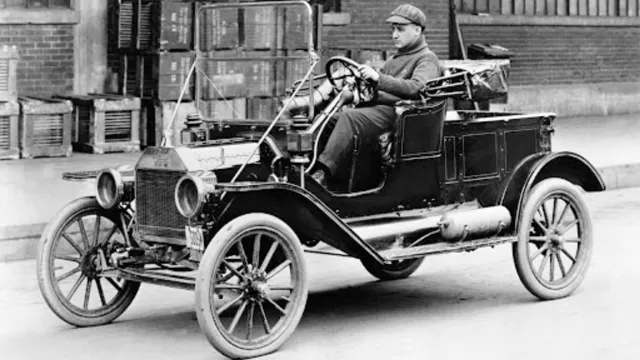
Honda’s First Electric Car Offering
Honda has always been at the forefront of innovation and the automaker’s first electric car offering in the early days shows this commitment. The Honda EV Plus was launched in 1997, with a range of around 100 miles on a single charge – impressive for its time. This vehicle was only available for lease and was limited to certain areas, but it served as an important step forward.
Honda continued to experiment with electric power, developing the FCX Clarity and the Fit EV. Fast forward to today, the Honda e is gaining popularity in Europe, with its unique design and impressive range. With the increasing focus on sustainability and reducing carbon emissions, Honda’s commitment to electric power is likely to continue for years to come.
Modern Honda Electric Cars
Honda has a long history of electric cars, dating back to the 1990s. However, it wasn’t until recently that the company began producing modern electric vehicles on a large scale. The Honda Clarity Electric made its debut in 2017, followed by the Honda e in 2020.
The Clarity Electric is a compact sedan with a range of up to 89 miles, while the Honda e is a small hatchback available in Europe and Japan with a range of up to 137 miles. Both vehicles offer impressive technology and design, with features like touchscreen infotainment systems and sleek, futuristic styling. Despite these newer models, Honda’s electric car journey hasn’t been without its ups and downs.
The company briefly discontinued its previous electric cars due to low sales, but has since re-entered the market with a renewed focus on sustainability and innovation. Overall, Honda’s electric car history has been marked by innovation and experimentation, and the future looks bright for the company’s electric vehicle offerings.
Honda’s Current Electric Lineup
Honda has been making strides towards environmentally friendly vehicles, with their current electric lineup boasting modern and sleek designs. The Honda Clarity is a fully electric car with a range of 89 miles. It features a spacious interior, a touchscreen infotainment system, and a suite of advanced safety features.
The Honda Accord Hybrid is a hybrid sedan that offers impressive fuel efficiency and a powerful drivetrain. The Honda Insight is also a hybrid sedan, but with a futuristic design and cutting-edge technology, it offers great ride quality and fuel economy. Lastly, the Honda CR-V Hybrid is a versatile SUV that combines the comfort of an SUV with hybrid technology.
It is perfect for those who want practicality and power, without sacrificing fuel efficiency. Honda’s commitment towards clean energy is evident in their electrified cars, making it simpler for drivers to switch to sustainable transportation.
Innovative Features in Honda’s Electric Cars
Honda’s electric cars are a marvel of modern technology, featuring innovative features that set them apart from the competition. One such feature is the Smart Parking Assist System, which uses a combination of sensors and cameras to help guide the driver into a parking space. Another key feature of Honda’s electric cars is their long battery life, which allows drivers to travel further on a single charge than ever before.
Additionally, Honda’s electric cars come equipped with a wide range of safety features, including intelligent cruise control, lane departure warning, and collision mitigation braking system. Overall, modern Honda electric cars are a great option for drivers who want cutting-edge technology and eco-friendly transportation.
Design and Performance of Honda’s Electric Cars
Honda’s electric cars have come a long way since their early prototypes. Modern Honda electric cars offer sleek designs, impressive performance, and a comfortable driving experience. The Honda Clarity Electric sedan, for example, boasts an 89-mile range and can charge in as little as 3 hours with a level 2 charger.
The Honda Fit EV, on the other hand, offers a range of up to 82 miles on a single charge and a top speed of 90 mph. These cars are not only eco-friendly but also technologically advanced, with features such as regenerative braking and an energy-efficient heat pump system that uses waste heat from the car’s motor to heat the cabin. Overall, Honda’s electric cars prove that EVs can be both practical and stylish, with the performance and features that drivers demand.
Honda’s Future in Electric Cars
Honda has a rich history in electric cars that dates back to the mid-90s when it introduced its first electric car, the EV Plus. Although the car did not get much attention and was only available to lease in specific areas of California, Honda showed its commitment to electric mobility. In 2012, Honda introduced the Fit EV, which initially achieved moderate success and was only leased in California, Oregon, and New York.
However, Honda announced that it would discontinue the Fit EV in 2015, just three years after its introduction. Despite this setback, Honda continued to develop electric cars and introduced the Clarity Electric in 2017, followed by the Honda E in Europe in 2020. Honda’s future in the electric car market is promising, with the recent launch of its first fully electric SUV, the Honda Prologue, which is expected to arrive in 202
The Prologue is based on a new flexible EV platform and is set to be the first of many electric cars that Honda plans to release over the next few years. Honda’s electric car history may have had its ups and downs, but its commitment to sustainability and innovation will undoubtedly drive its success in the electric car market.
Honda’s Vision for All-Electric Future
Honda has recently launched its plans for an all-electric lineup in Europe by 202 The company has shared its vision for a cleaner environment and will introduce a new electric platform, e:Architecture, for its cars by the middle of the decade. According to Honda Motor Europe’s Senior Vice President, Tom Gardner, the company has pledged to achieve 100% electric vehicle sales in Europe by 2025, with high hopes that it will be a considerable step towards achieving their net carbon neutrality target by 2050.
Honda expects that 40% of its sales globally will be electric by 2030, and the company aims to become carbon neutral in its operations and products by the year 2050. This marks a significant milestone for the company, presenting a distinct shift from its emphasis on hybrid cars. Honda is planning to launch two electric cars in Europe next year, with both models featuring a high-power motor and soon followed by more designs.
With these new plans, Honda is on track to become one of the leading brands in electric cars.
Honda’s Plan for Expanding Electric Car Production
Honda is making strides in expanding its production of electric cars for the future. The Japanese automaker plans to have two-thirds of its global sales come from hybrid and electric vehicles by 2030. With the push towards environmental sustainability, many automakers are transitioning to producing electric vehicles, and Honda is no exception.
In fact, the company has already introduced their Honda e model in Europe and Japan, and plans to release more electric cars in the coming years. Honda has also partnered with General Motors to develop two new electric vehicles using GM’s Ultium batteries, further demonstrating their commitment to this market. It’s exciting to see Honda taking steps to reduce their carbon footprint and provide consumers with a greener option for their car purchases.
Conclusion: Honda’s Legacy in Electric Cars
After over two decades of experimentation and refinement, Honda has finally unleashed its vision of an electric car that is both practical and exciting to drive. From their early prototypes in the 1990s to the stylish and efficient vehicles on the market today, Honda’s dedication to innovation and sustainability is evident in every step of their electric car history. As we continue to embrace cleaner and greener technology, it’s clear that Honda will remain at the forefront of this exciting new frontier.
“
FAQs
When did Honda start producing electric cars?
Honda began producing electric cars in 1993, with the introduction of the EV Plus.
What was the range of Honda’s first electric car?
Honda’s first electric car, the EV Plus, had a range of 100 miles per charge.
What happened to Honda’s electric car program in the early 2000s?
Honda stopped producing electric cars in the early 2000s due to low demand and the high cost of battery technology at the time.
When did Honda reintroduce electric cars to their lineup?
Honda reintroduced electric cars to their lineup in 2017 with the release of the Clarity Electric and Clarity Plug-in Hybrid.
What is currently the range of Honda’s electric cars?
The Honda Clarity Electric has a range of 89 miles per charge, while the Clarity Plug-in Hybrid has an estimated electric range of up to 47 miles before switching over to gas.



